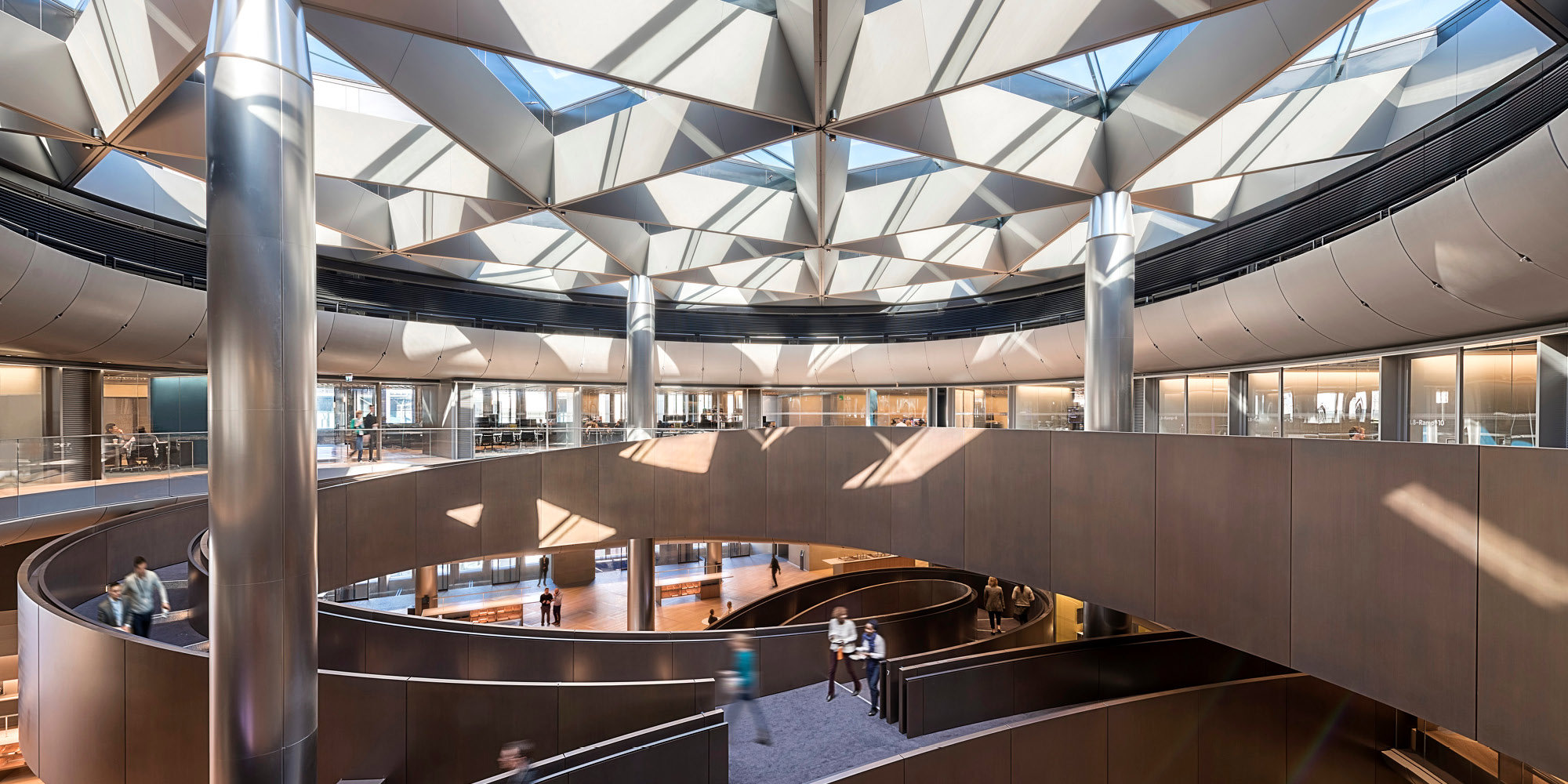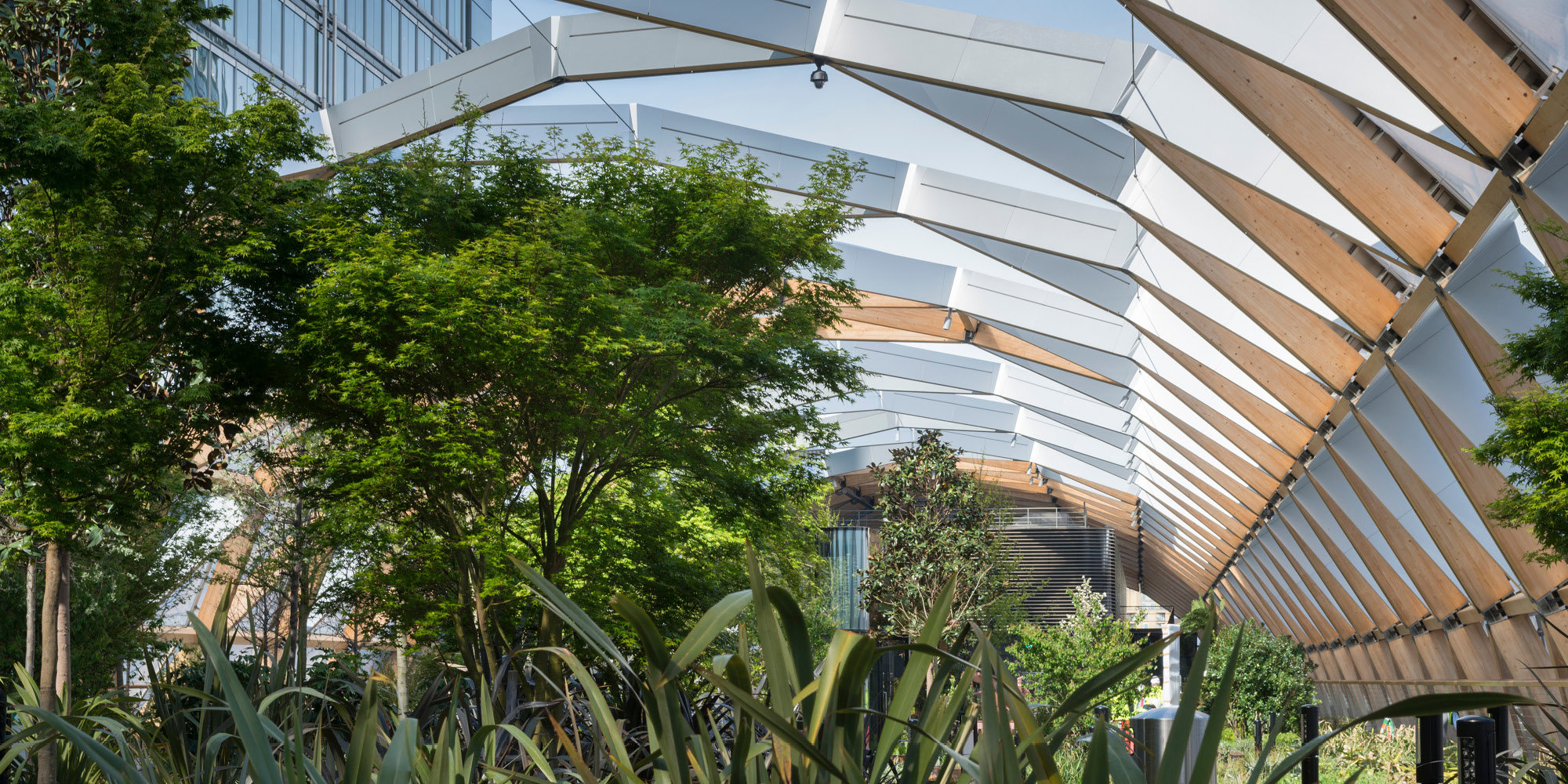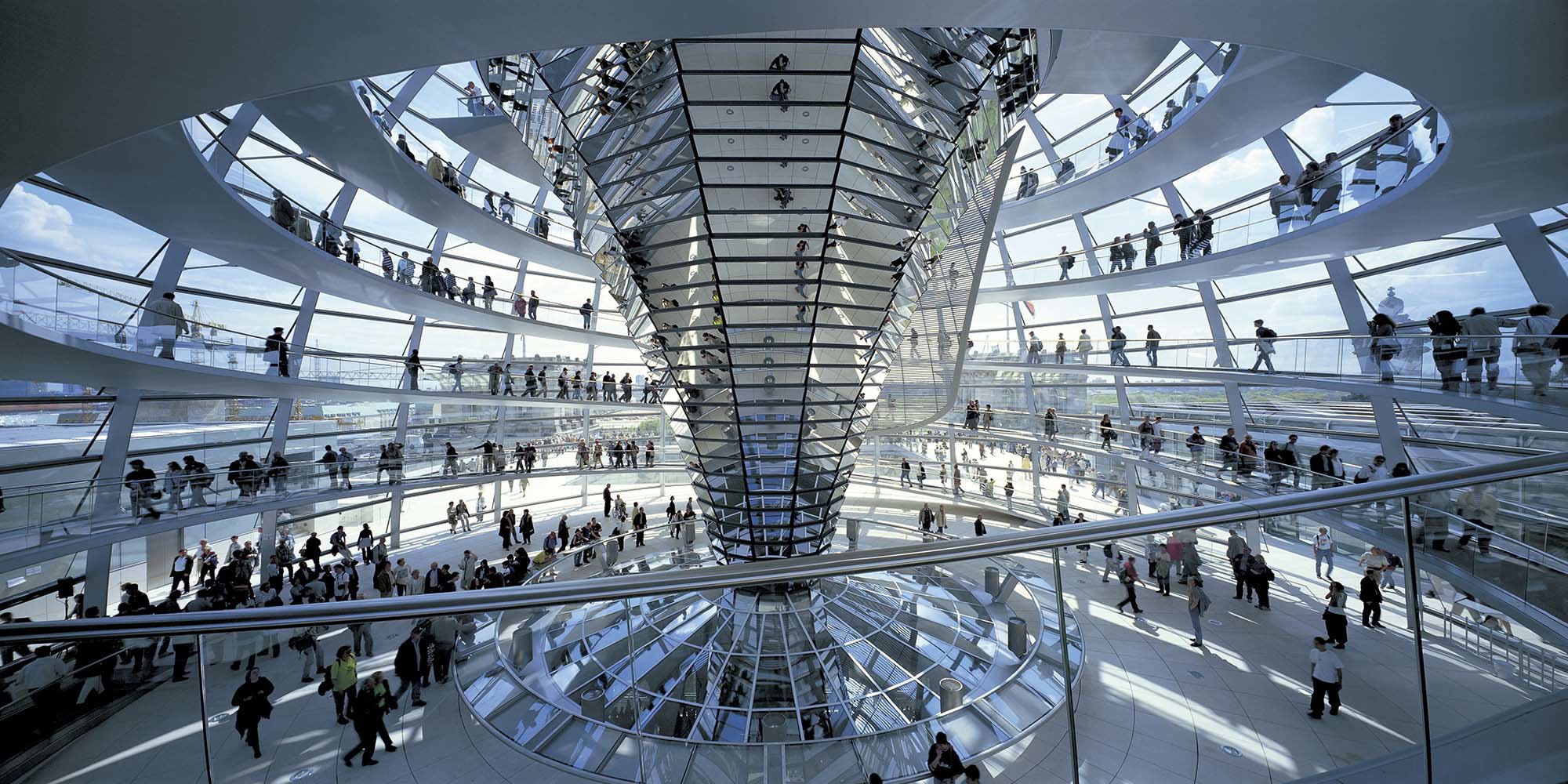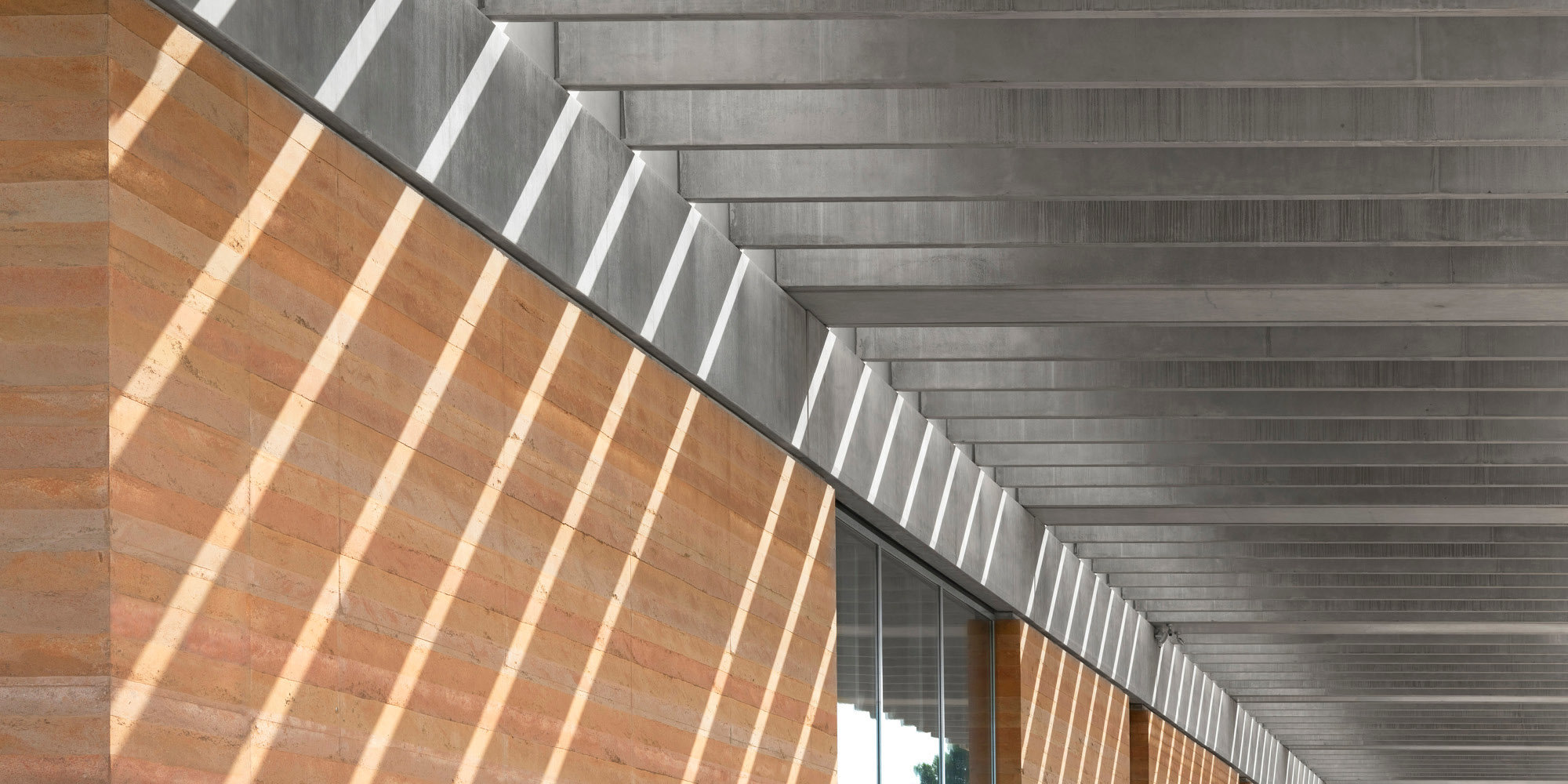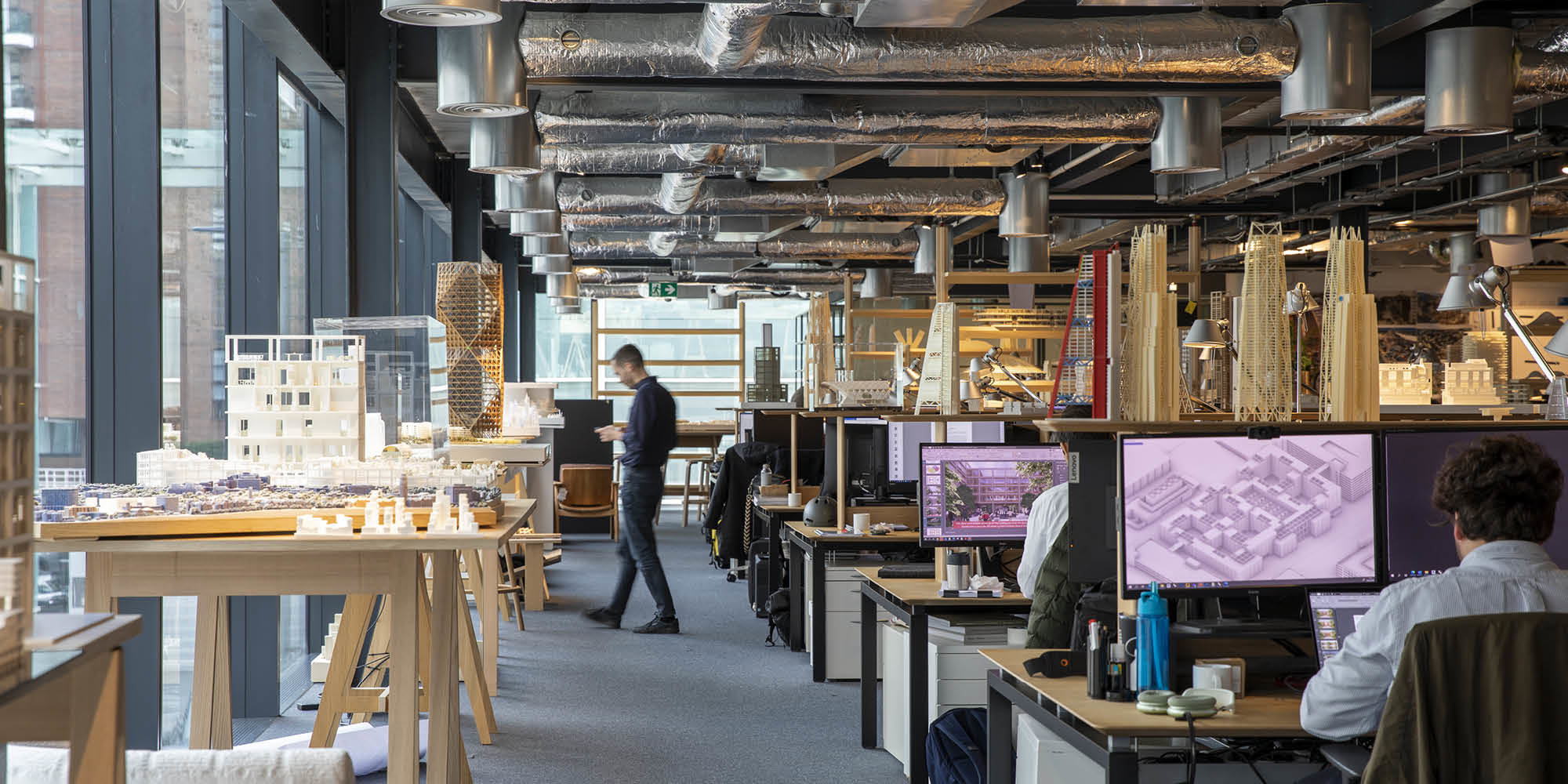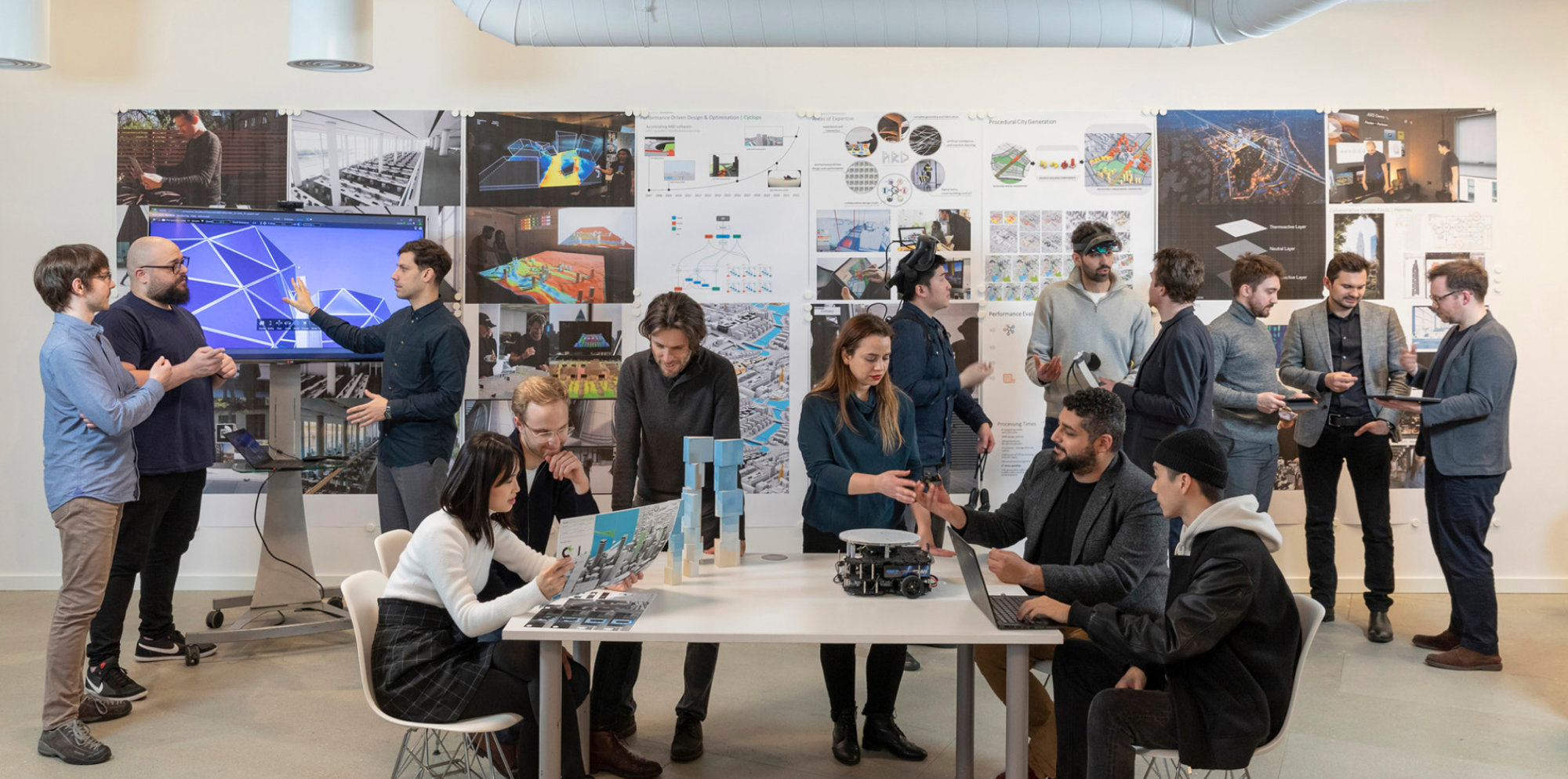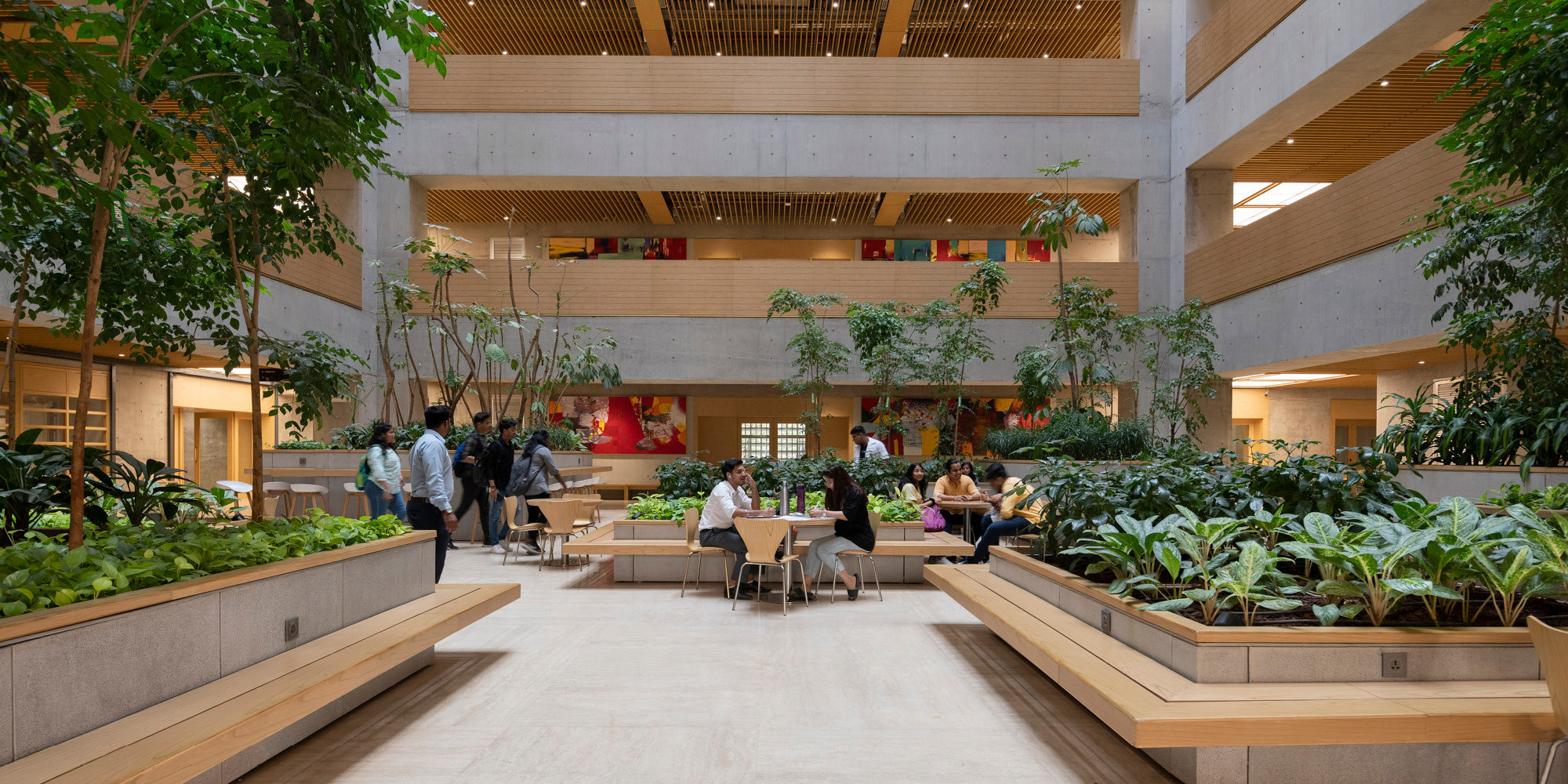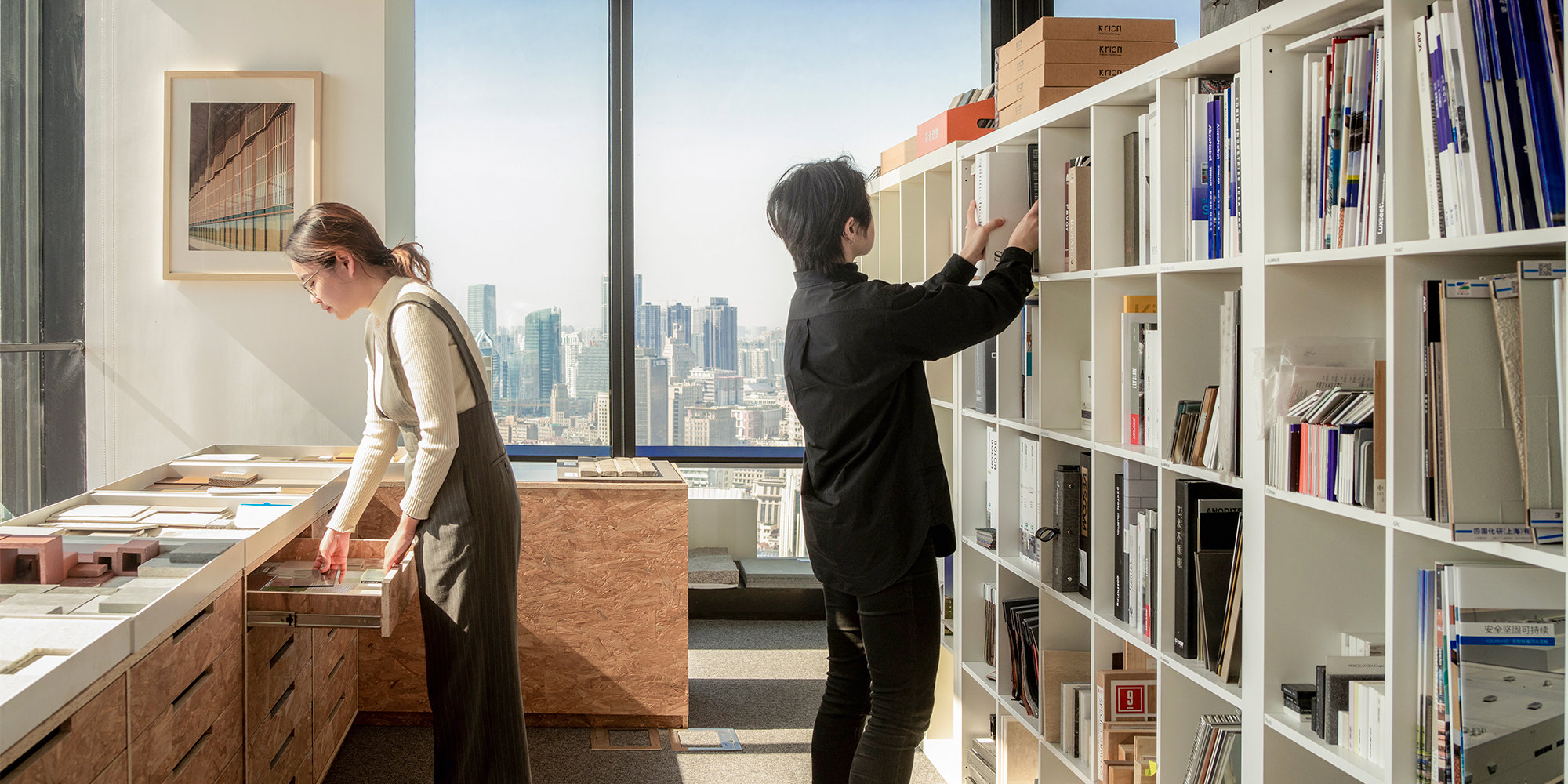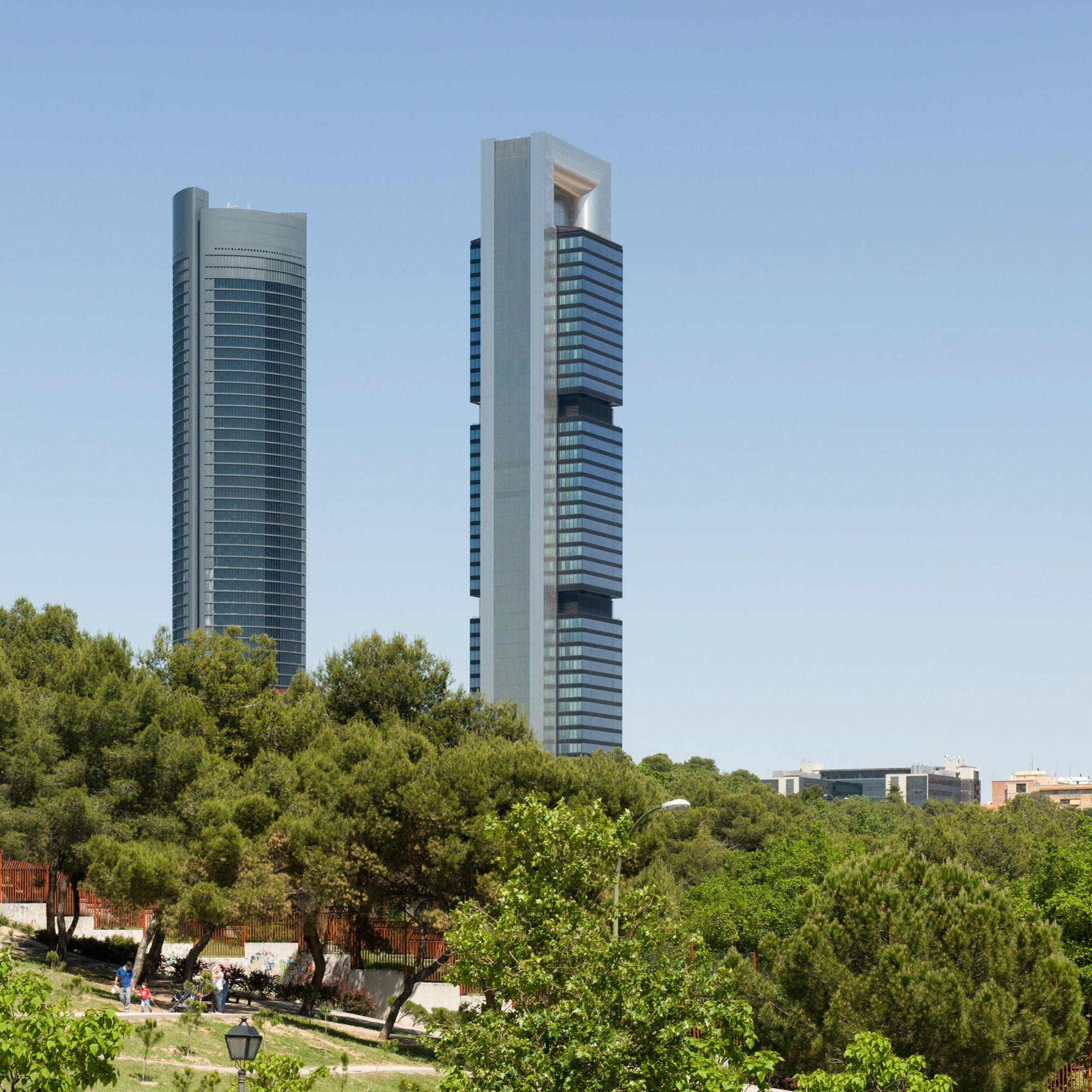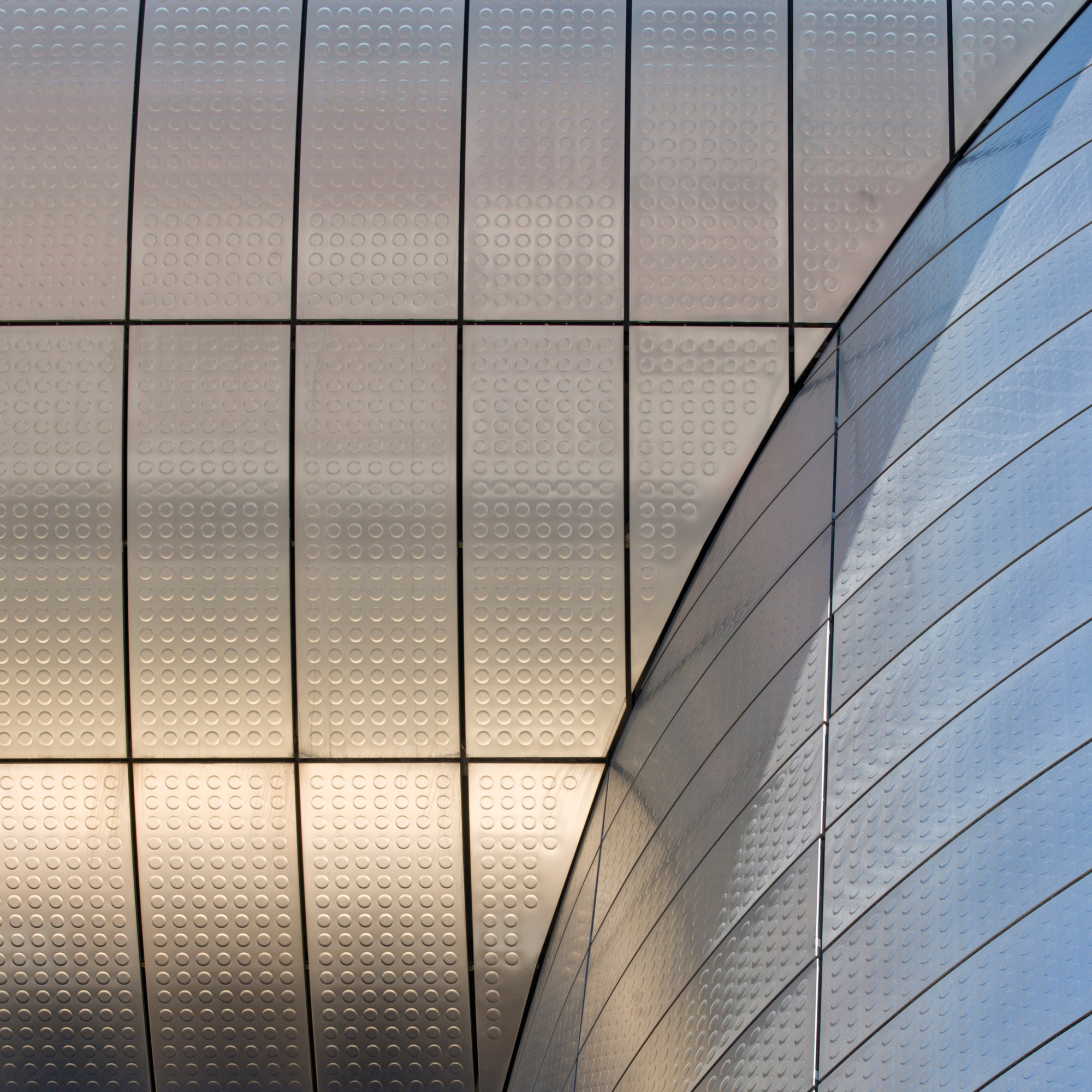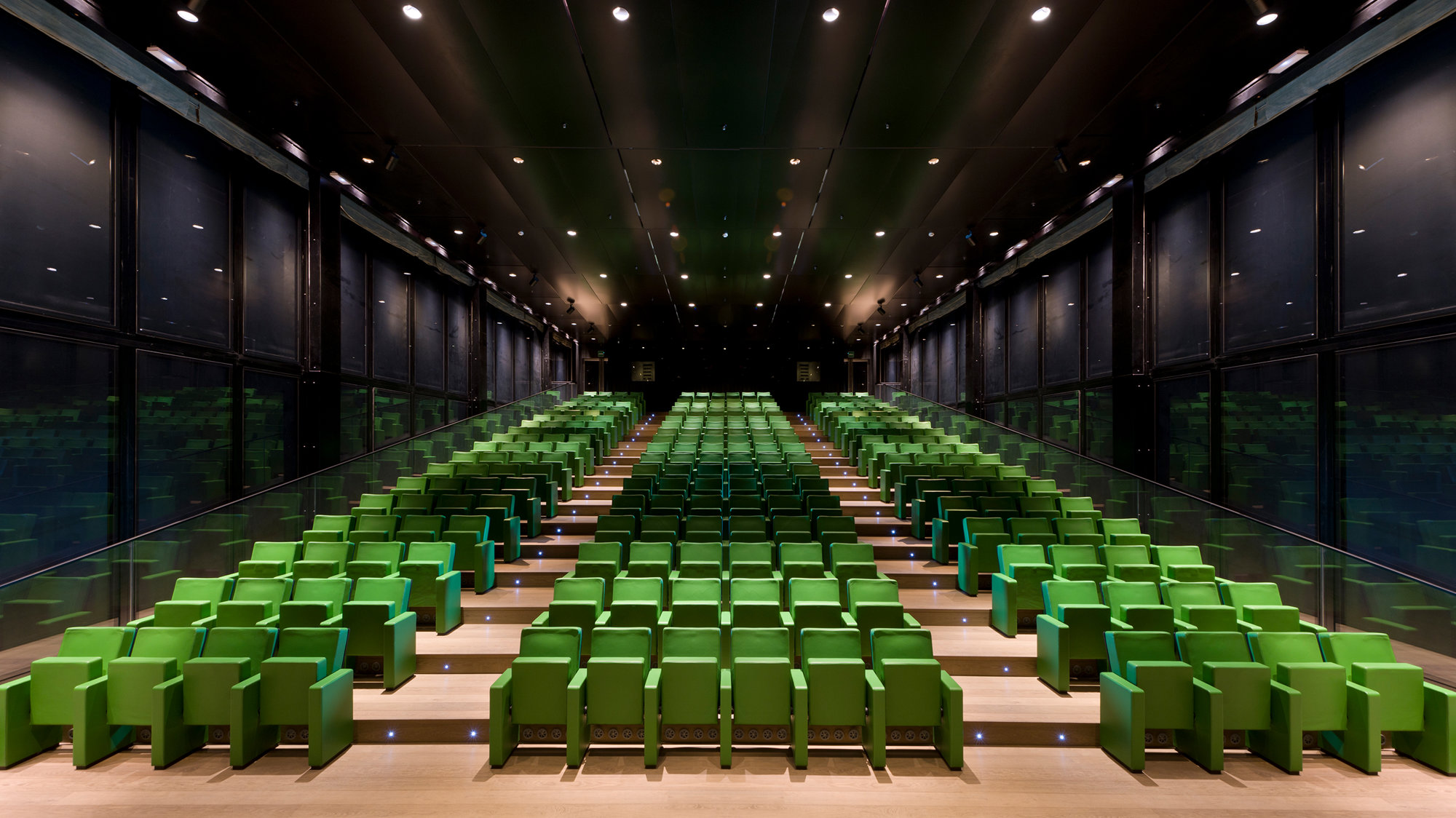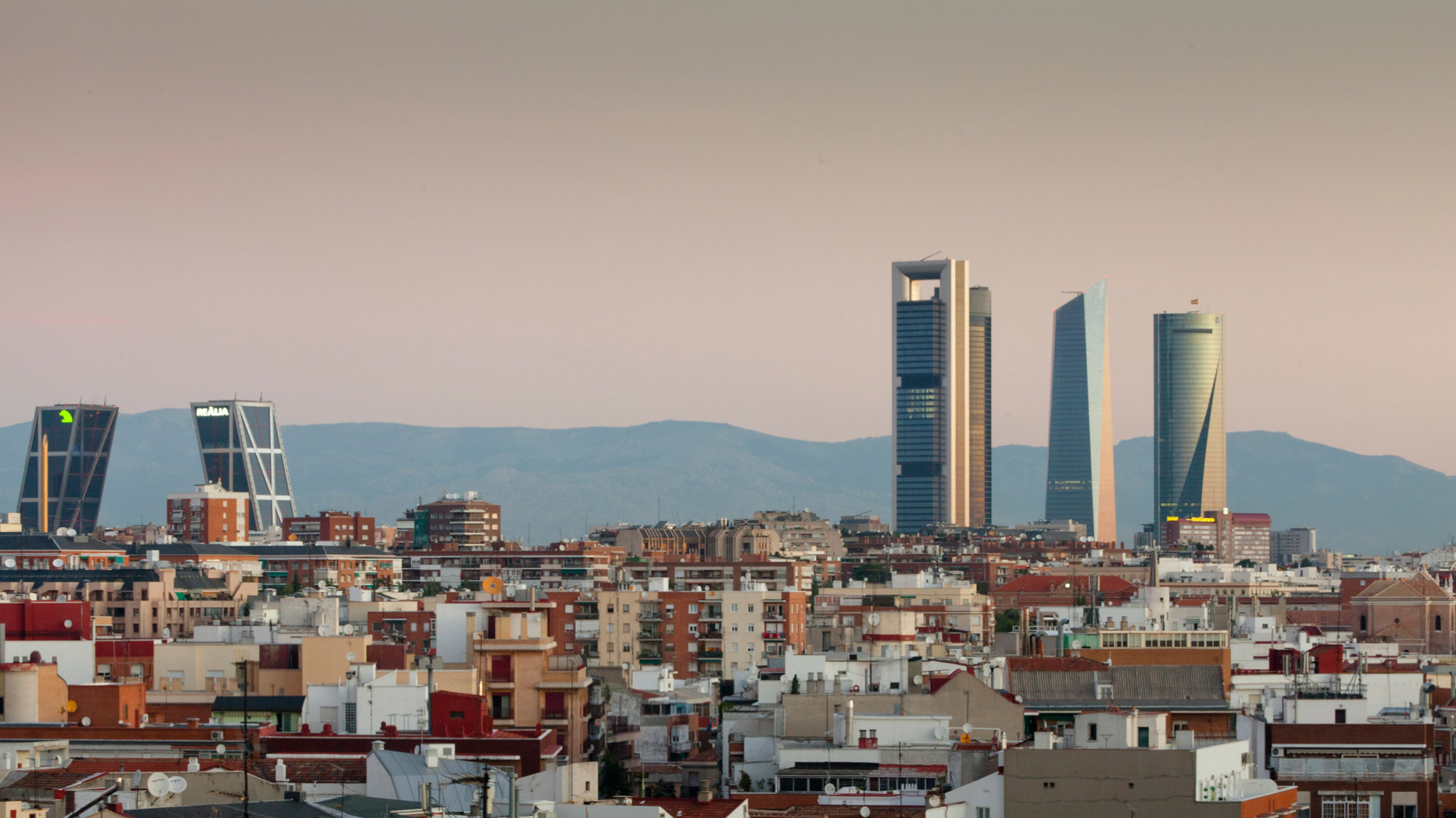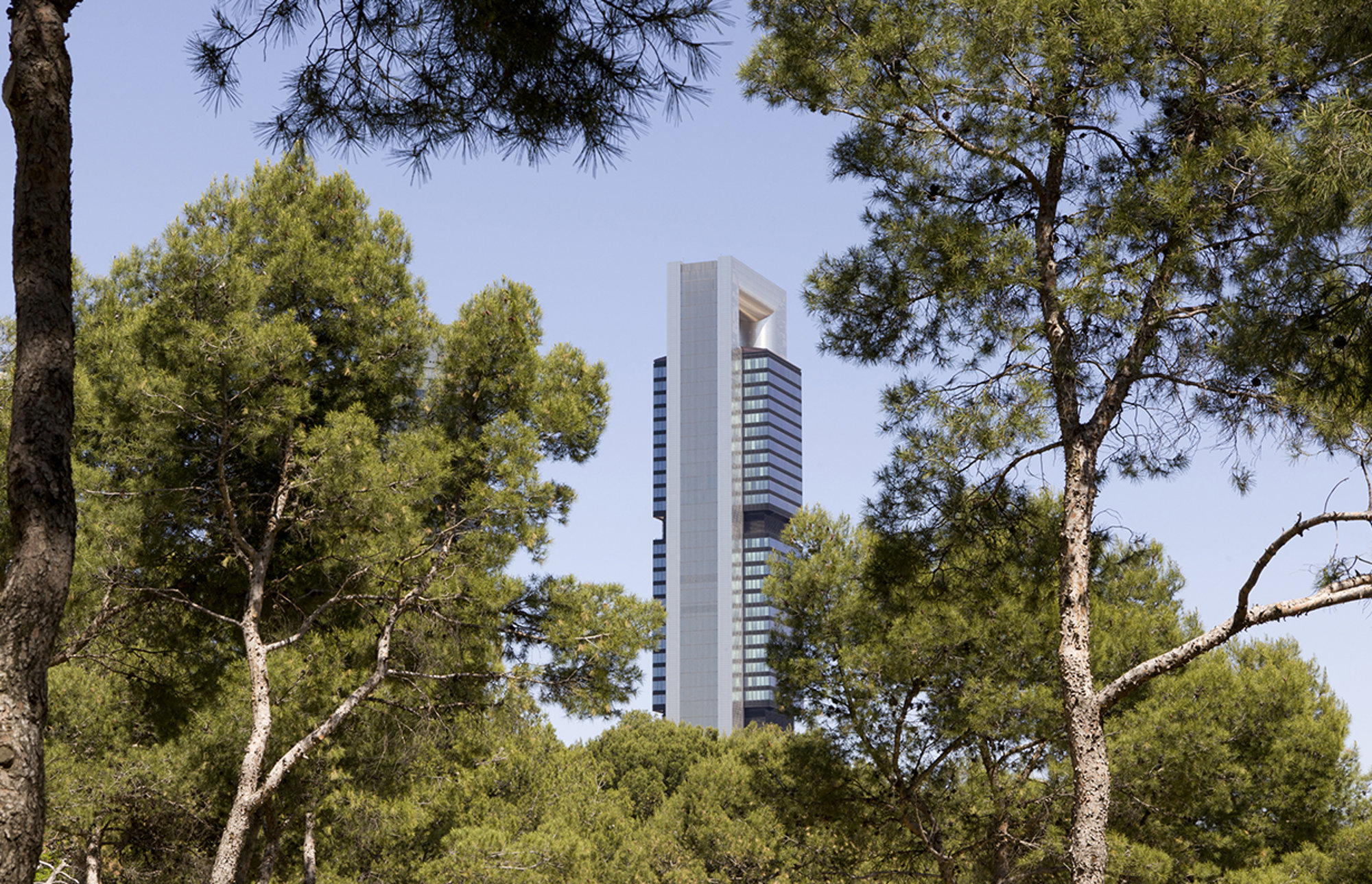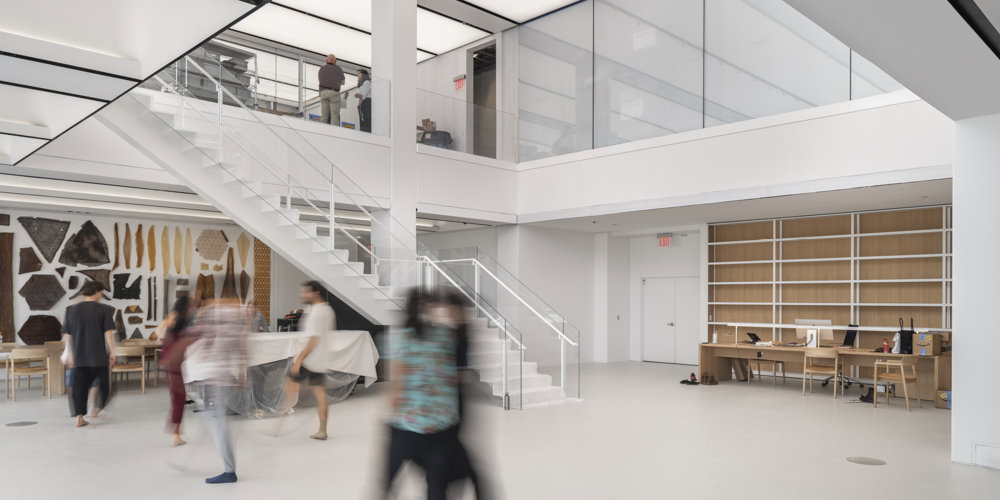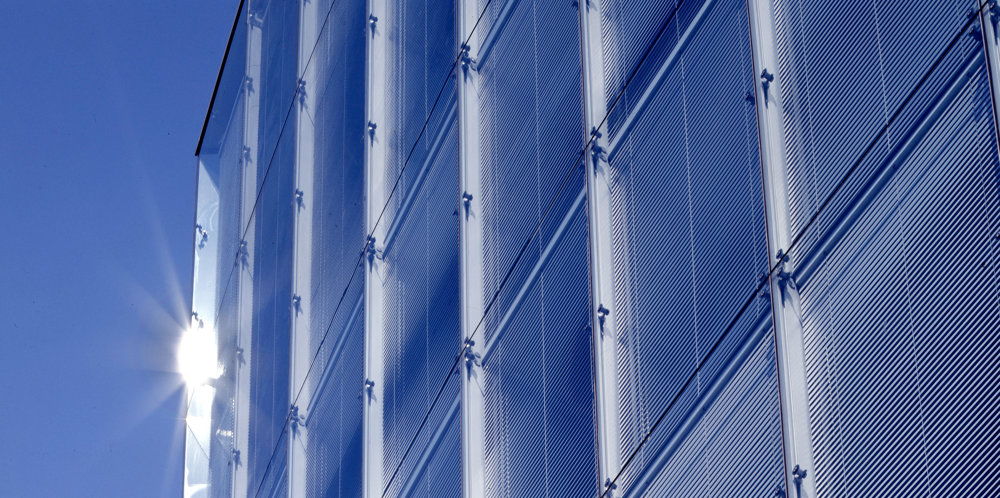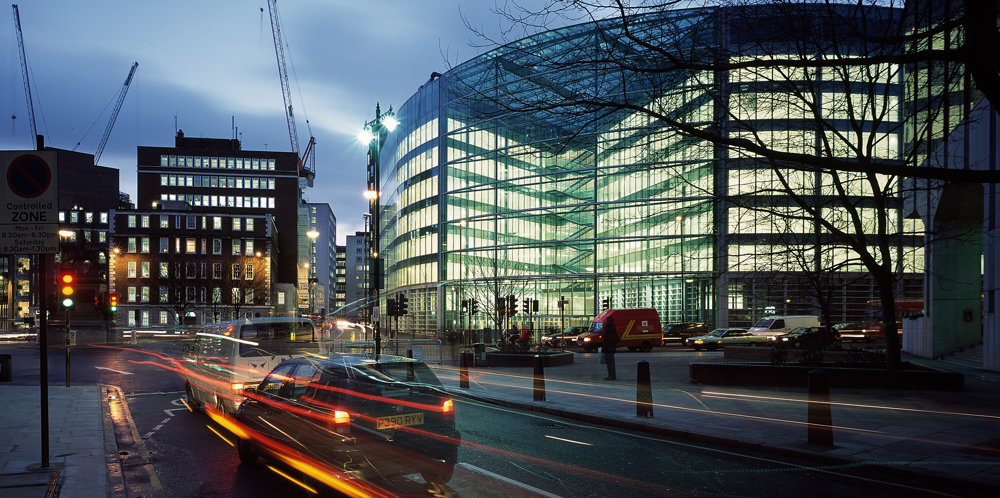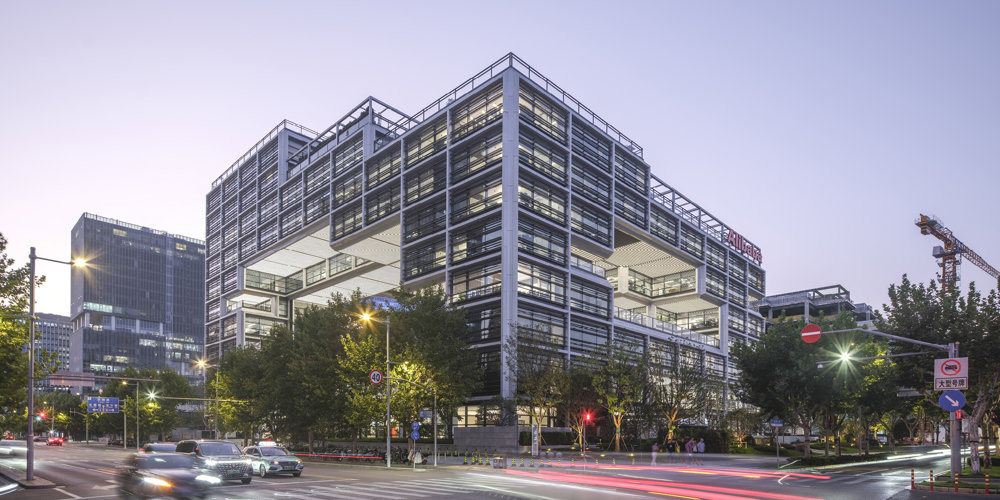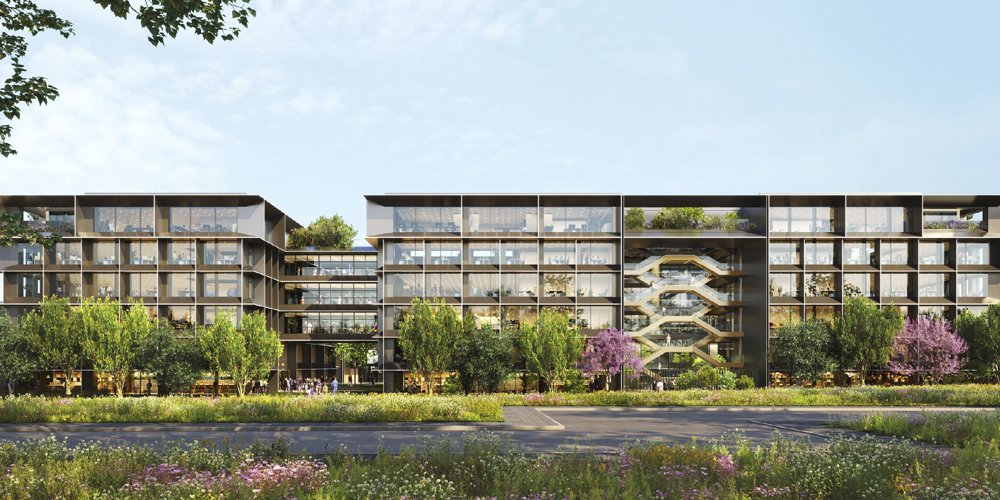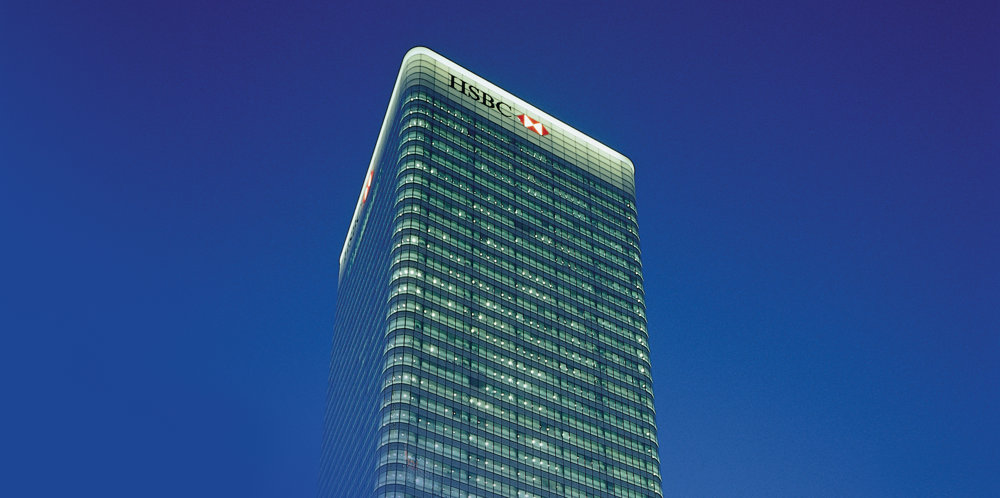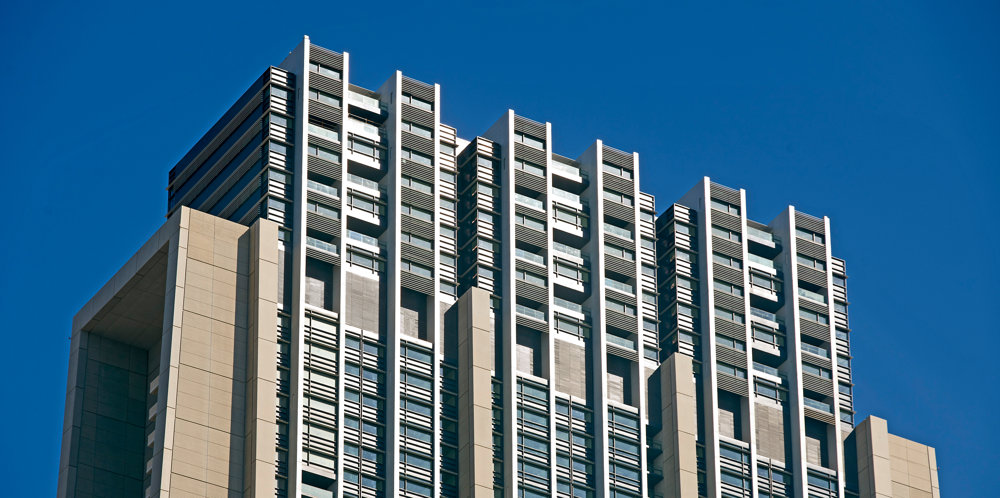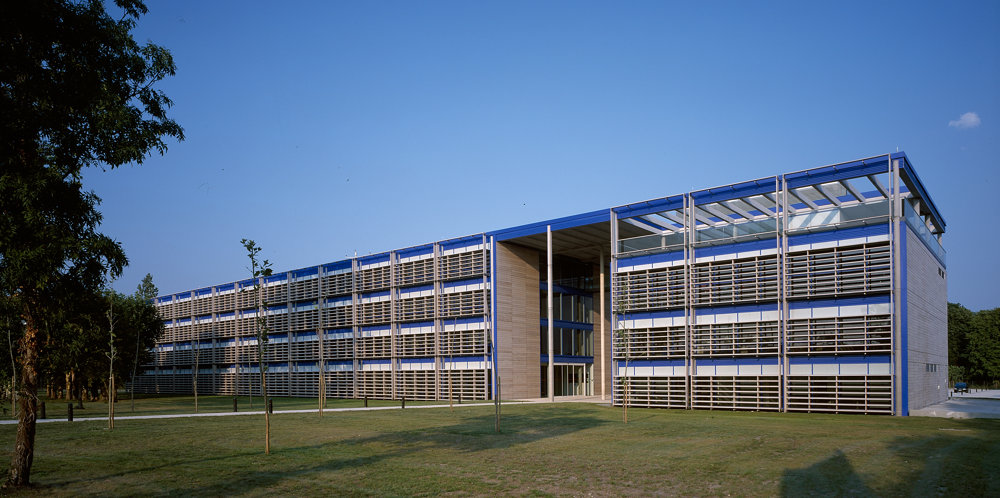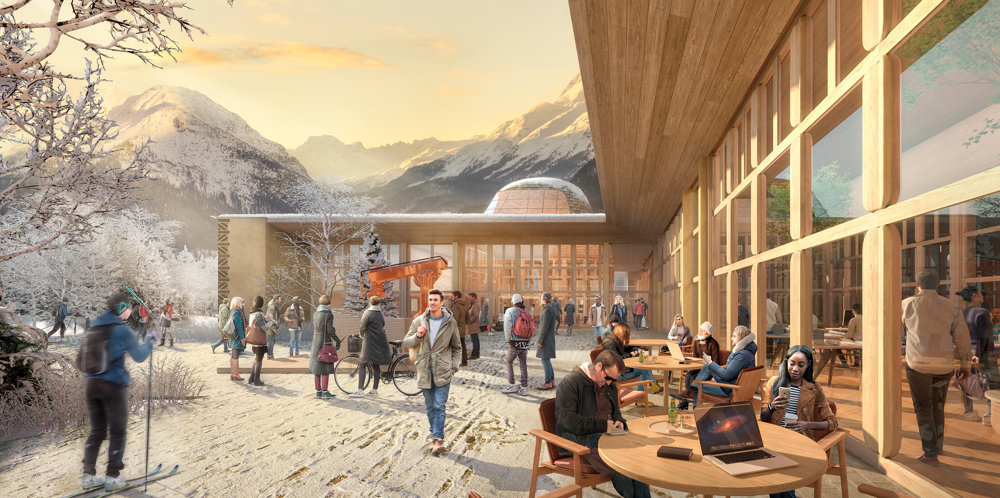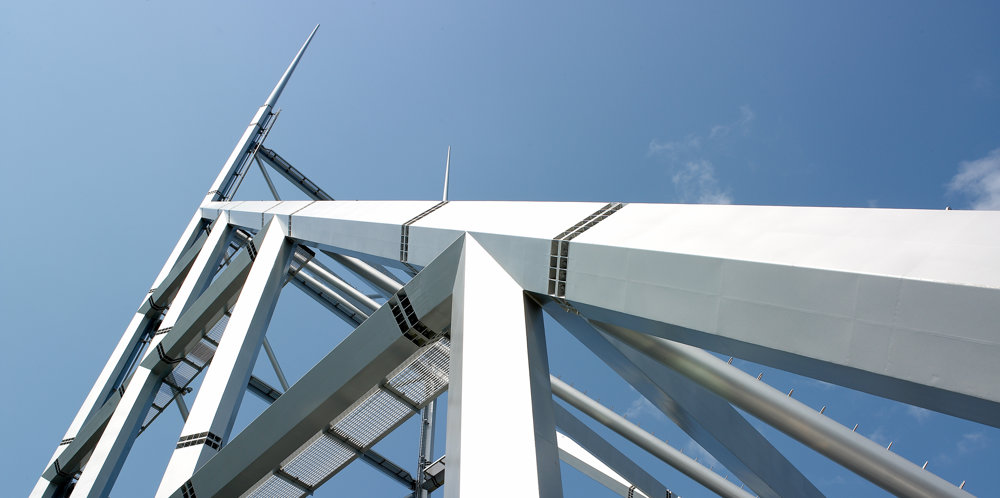Torre Cepsa was originally built as a landmark headquarters for Caja Madrid, Spain’s oldest savings bank – its subsequent transfer to oil company, Cepsa demonstrates the flexibility of its office accommodation. The tower’s design continues the practice’s investigations into the environmentally sensitive, uplifting workplace, which can be traced through the design of a family of office towers, most notably for the Commerzbank, Swiss Re and the Hearst Corporation.
The fifty-five-storey tower is located on the site of the former Real Madrid training grounds, where the Madrid city council assigned sites for four new towers, to be designed by leading international architects. Torre Cepsa is the tallest of this group. It marks a curve in the wide boulevard of the Paseo de la Castellana – the ‘backbone’ of Madrid – and is carefully positioned to maximise the exceptional qualities of its site. Compositionally, the building can be thought of as a tall arch, with the services and circulation cores framing the office floors. At ground level, a 22-metre-high glazed atrium provides the transition from the street, and accommodates a ‘floating’ glass-walled auditorium set into a mezzanine. At the top of the building, the void beneath the uppermost section of the ‘portal’ frame is designed to house wind turbines, which are capable of providing a significant proportion of the building’s power supply.
Although the building was conceived as a corporate headquarters, it also has the flexibility to be partly sub-let if required, enabling Cepsa to expand or contract its accommodation easily in the future. This degree of adaptability results in part from pushing the service cores to the edges of the plan – a strategy pioneered in the design of the Hongkong and Shanghai Bank – to create 1,200-square-metre floor plates. The north-south orientation maximises natural shade by directing the low-angle sunlight towards the cores, a move that has the added benefit of framing spectacular views of the hills of Sierra de Guadarrama to the north and the centre of Madrid to the south. Strategies such as triple-glazing the office facades further improve the building’s energy efficiency.
